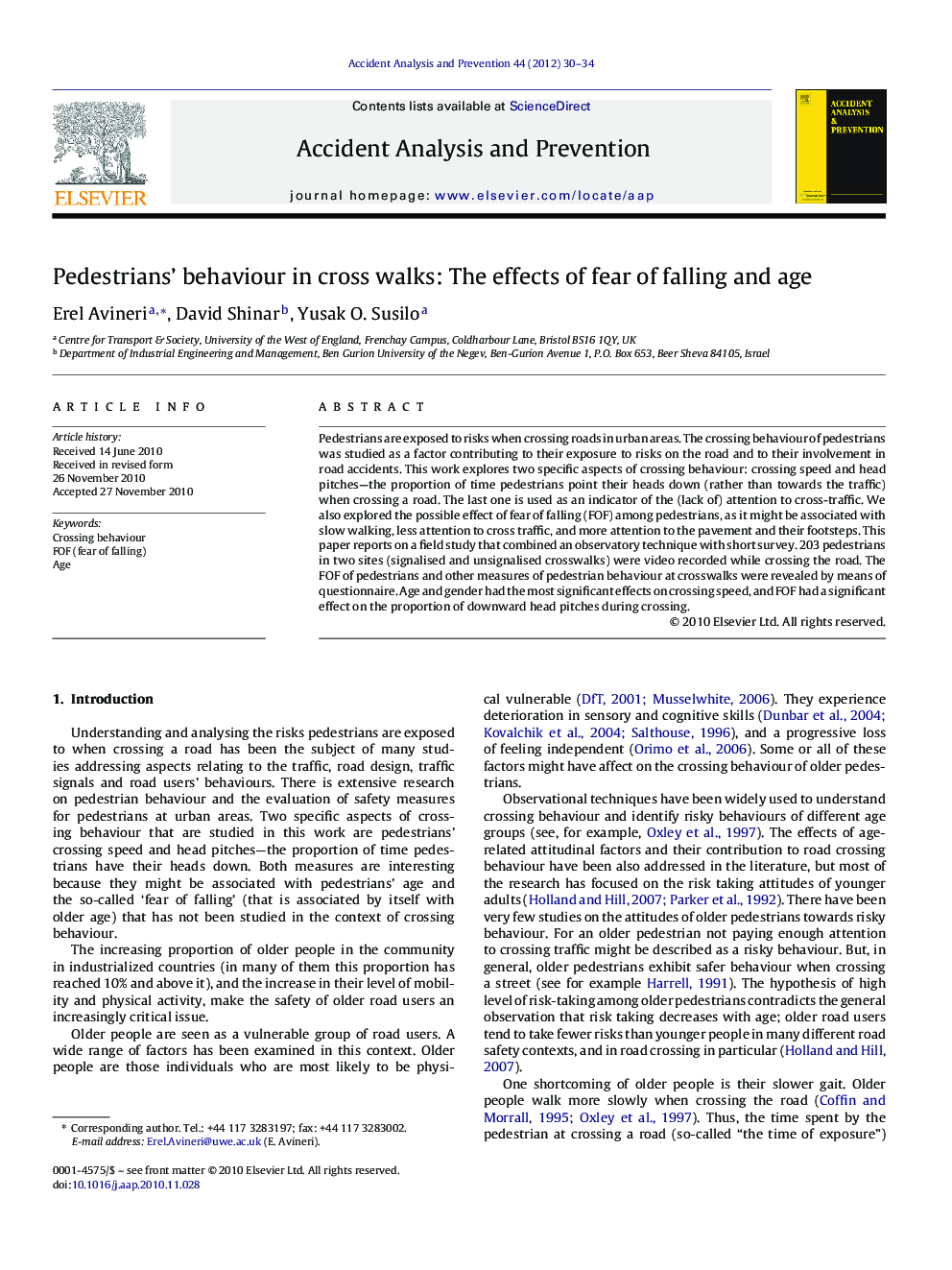| Article ID | Journal | Published Year | Pages | File Type |
|---|---|---|---|---|
| 572790 | Accident Analysis & Prevention | 2012 | 5 Pages |
Pedestrians are exposed to risks when crossing roads in urban areas. The crossing behaviour of pedestrians was studied as a factor contributing to their exposure to risks on the road and to their involvement in road accidents. This work explores two specific aspects of crossing behaviour: crossing speed and head pitches—the proportion of time pedestrians point their heads down (rather than towards the traffic) when crossing a road. The last one is used as an indicator of the (lack of) attention to cross-traffic. We also explored the possible effect of fear of falling (FOF) among pedestrians, as it might be associated with slow walking, less attention to cross traffic, and more attention to the pavement and their footsteps. This paper reports on a field study that combined an observatory technique with short survey. 203 pedestrians in two sites (signalised and unsignalised crosswalks) were video recorded while crossing the road. The FOF of pedestrians and other measures of pedestrian behaviour at crosswalks were revealed by means of questionnaire. Age and gender had the most significant effects on crossing speed, and FOF had a significant effect on the proportion of downward head pitches during crossing.
Research highlights▶ We explore pedestrians’ crossing speed and the proportion of time they point their heads down. ▶ We also explored the effect of fear of falling (FOF) on crosswalking behaviour. ▶ The paper reports on a field study that combined an observatory technique with short survey. ▶ Age and gender had the most significant effects on crossing speed. ▶ FOF had a significant effect on the proportion of downward head pitches during crossing.
